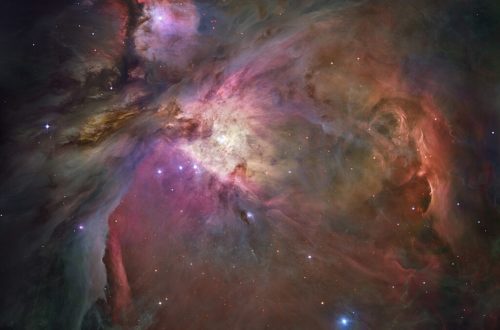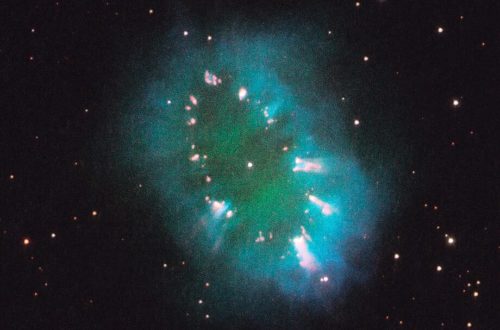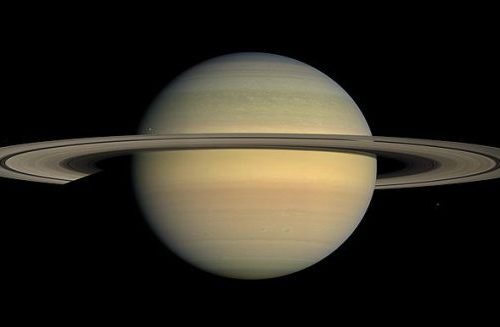Stargazing Calendar for October 2024
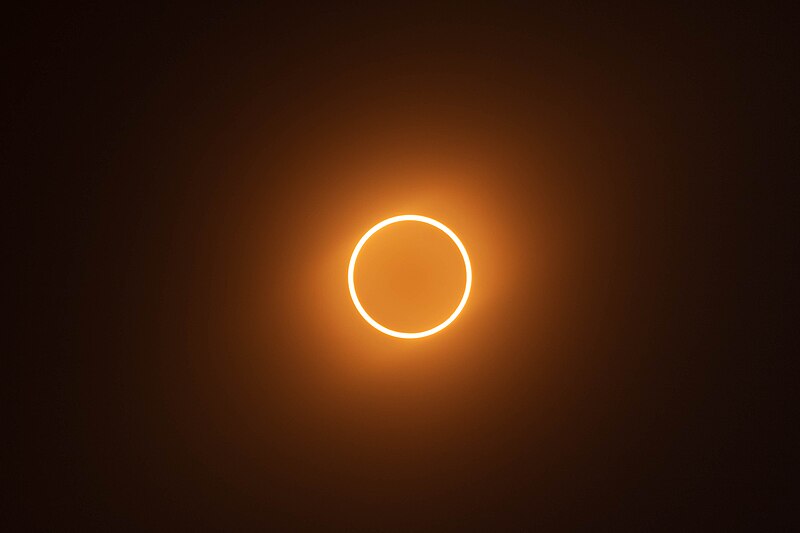
October 2024 promises an unforgettable lineup for stargazers and astronomy lovers alike. From distant galaxies and meteor showers to a spectacular annular solar eclipse, the skies will be full of wonders. Grab your binoculars or telescope, and prepare for a month of cosmic exploration.
Would you like to be notified of stargazing events?
List of Meteor Showers in October 2024
- ν-Eridanids: Start on September 1; peak on September 6; end on October 29.
- Daytime Sextantids: Start on September 9; peak on September 27; end on October 9.
- October Camelopardalids: Start on October 5; peak on October 6; end on October 6.
- Draconids: Start on October 6; peak on October 8; end on October 10.
- Southern Taurids: Start on September 10; peak on October 10; end on November 20.
- δ-Aurigids: Start on October 10; peak on October 11; end on October 18.
- ε-Geminids: Start on October 14; peak on October 18; end on October 27.
- Orionids: Start on October 2; peak on October 22; end on November 7.
- Leonis Minorids: Start on October 19; peak on October 24; end on October 27.
- Northern Taurids: Start on October 20; peak on November 12; end on December 10.
We also have a complete list of meteor showers for the entire year of 2024 here.
List of Planetary Conjunctions in October 2024
- Conjunction of the Moon and Venus in Libra on October 5.
- Conjunction of the Moon and Saturn in Aquarius on October 14.
- Conjunction of the Moon and Jupiter in Taurus on October 21.
- Conjunction of the Moon and Mars in Gemini on October 23.
October 1: The Andromeda Galaxy at its highest point in the sky
The largest galaxy in the local group, Andromeda (Messier 31, M31, or NGC 224), will reach its highest point in the sky at around midnight local time.
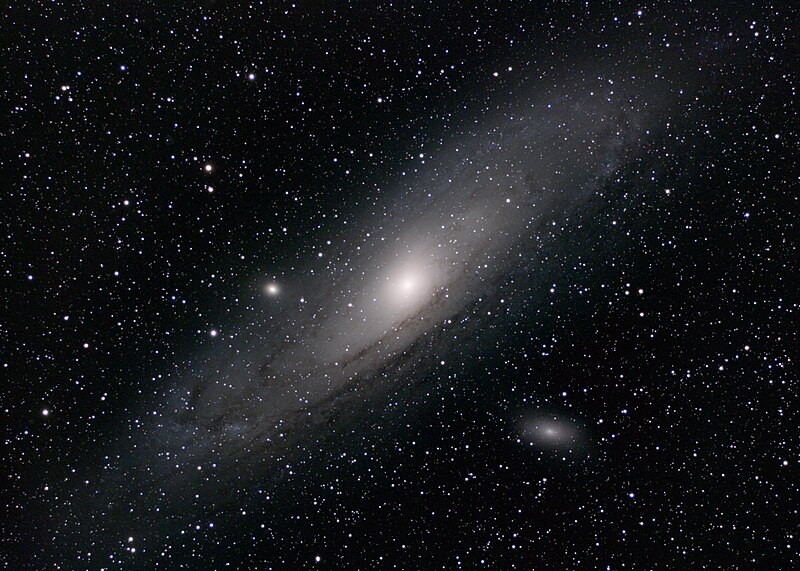
The galaxy will reach an apparent magnitude of 3.4, and the Moon won’t be interfering with stargazing this early October 2024, because it will be a waning crescent (1%) at 28 days old. It would be very difficult to spot with the naked eye, but quite easy with a pair of binoculars or a small telescope. Look in the constellation of Andromeda, after which the galaxy was named.
The Andromeda Galaxy looks like such a small pinprick of light when observed from Earth, but in reality you’re looking at one trillion stars there! Just imagine!
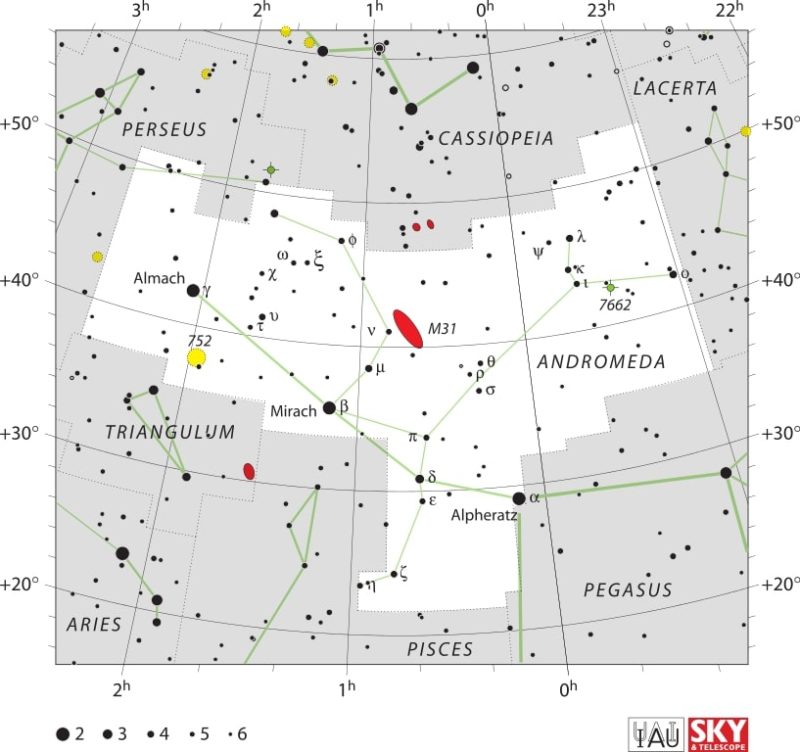
October 2: Annular solar eclipse
An annular solar eclipse happens when the Moon is too far away from the Earth to completely cover the Sun. This creates a ring of light around the darkened Moon. The corona is not visible during an annular eclipse. (See featured image at the top of the article.)
The eclipse will begin in the Pacific Ocean off the coast of South America and continue across Chile and Argentina. A partial eclipse will also be visible across much of South America. See NASA’s fact sheet below.
Be careful to not look directly at the Sun and especially not to point a telescope at it. This is very dangerous to your eyes and may result in permanent eye damage.
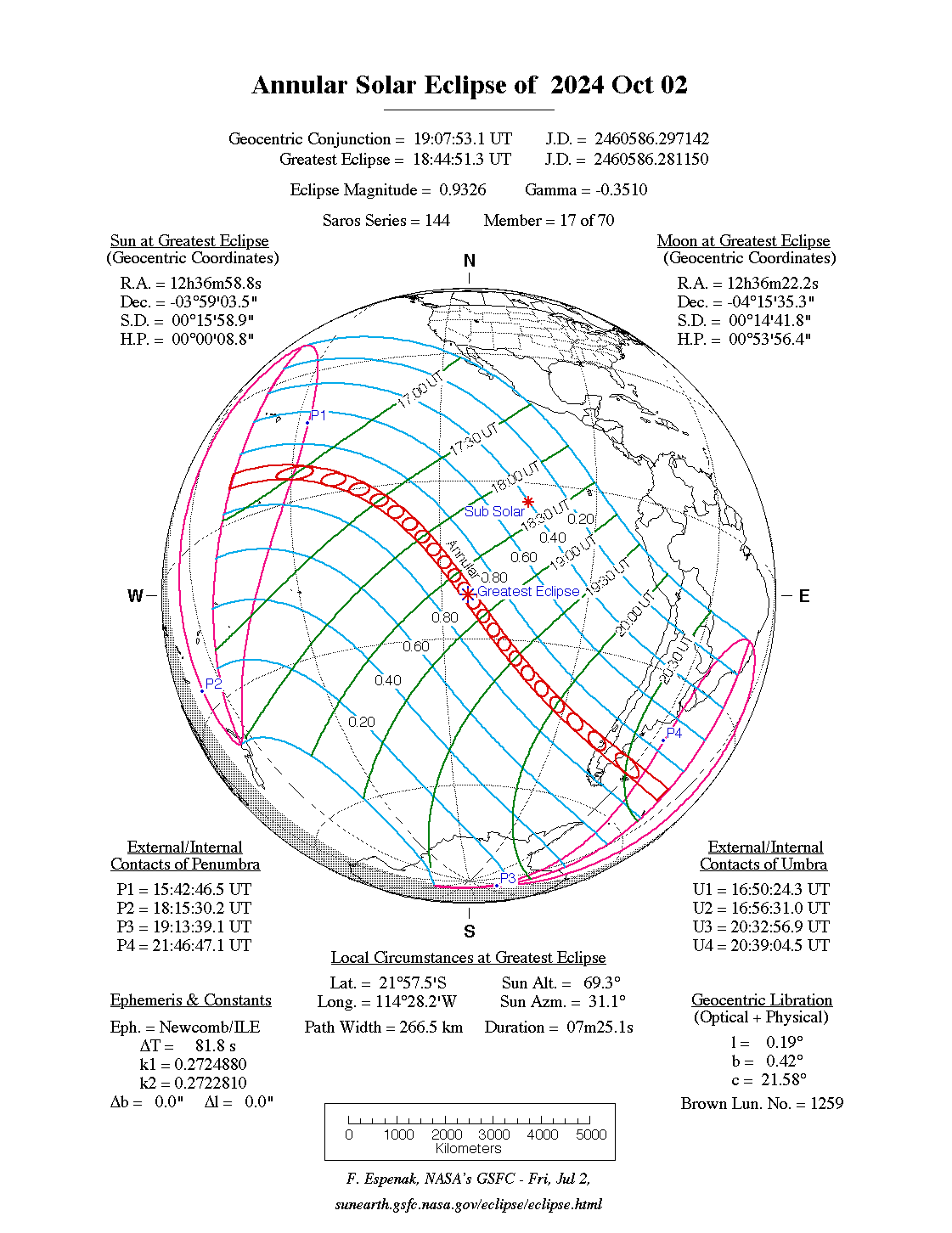
October 4: The Small Magellanic Cloud at its highest point in the sky
The Small Magellanic Cloud (SMC) is a satellite galaxy of the Milky Way. The galaxy will reach its highest point in the sky at around midnight local time.
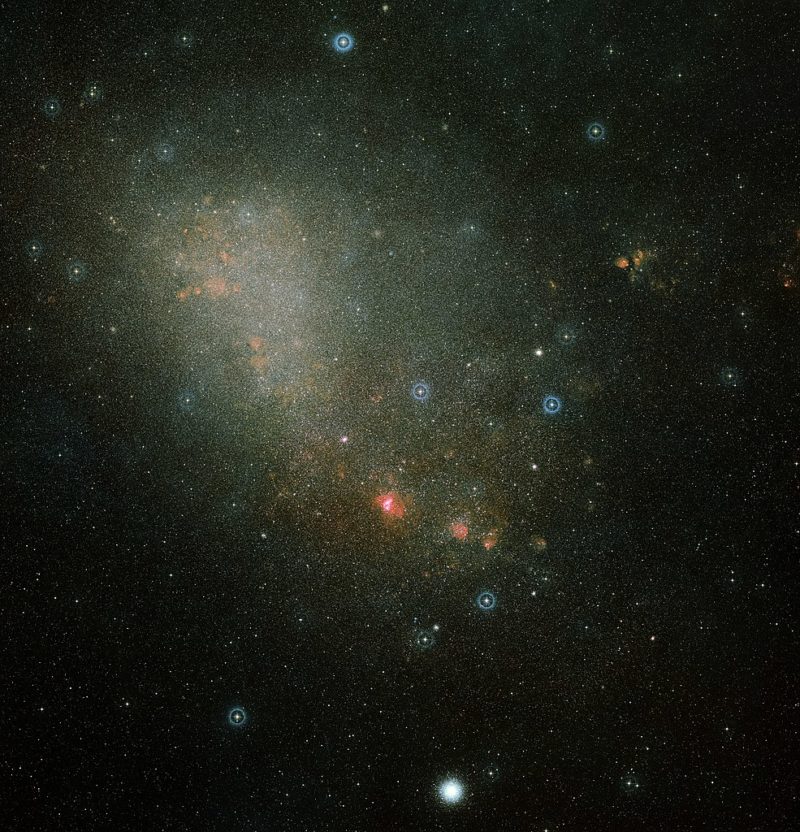
With an apparent magnitude of 2.7, the SMC can be seen with the naked eye, but for better results I would recommend at least a pair of standard binoculars. Look in the constellation of Tucana in the Southern Hemisphere. Luckily, there will be no interference from the Moon because it will be a 2 days old waxing crescent at 6%.
The Small Magellanic Cloud is located 204,000 light-years from us. It has been named after Ferdinand Magellan who observed it during his voyage of circumnavigation of the world in 1519.
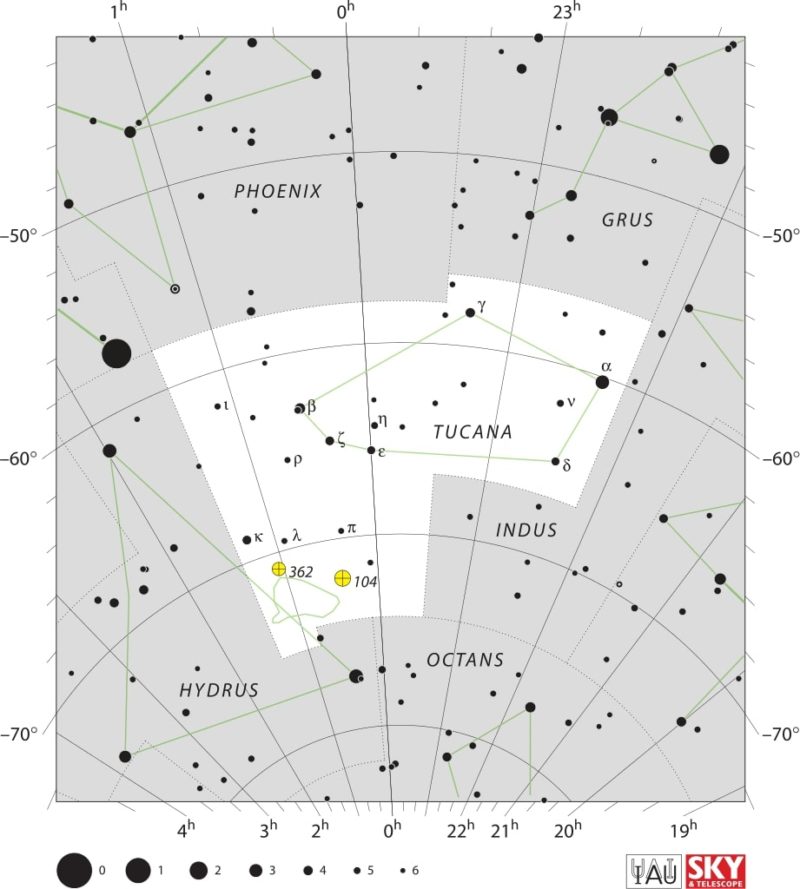
October 5: October Camelopardalid meteor shower peak
The October Camelopardalids are a short and variable meteor shower that will peak on October 5 and will only last until the next day. The meteors will radiate from the constellation of Camelopardalis at the speed of 46 km/s on average. The Moon will be a 3 days old waxing crescent at 9%.
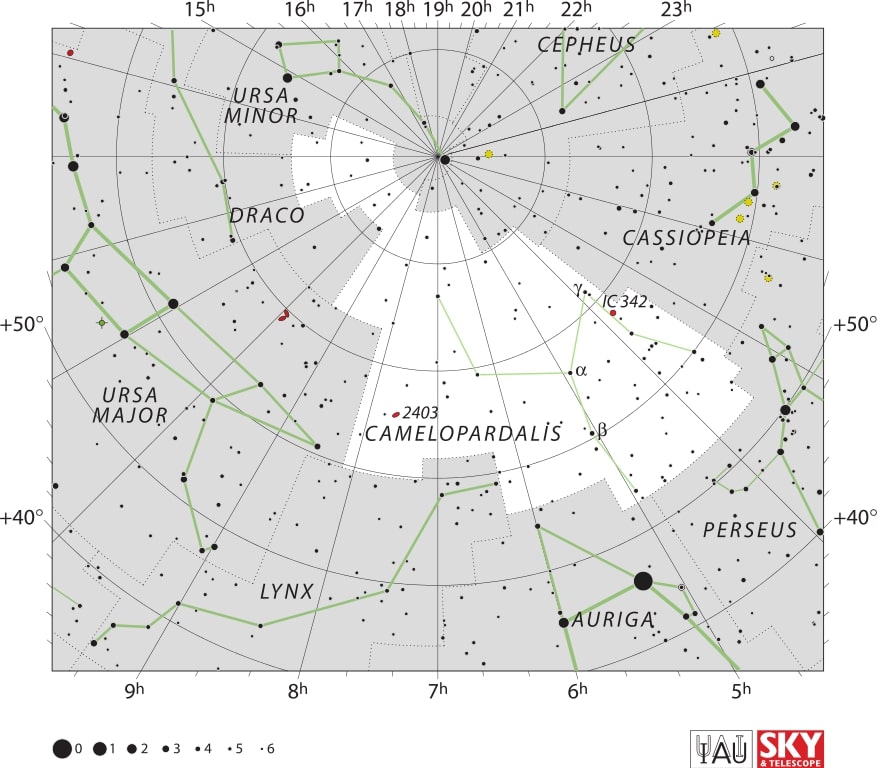
October 5: Conjunction of the Moon and Venus
The Moon and Venus will be at conjunction by sharing the same right ascension and passing within 3°00′ of each other.
Around the same time, the two bodies will also make a close approach (appulse) reaching 2°48′ from each other, but not sharing the same right ascension.
Look for the two bodies in the constellation of Libra. The Moon will be a very thin waxing crescent (11%) at 3 days old and will not interfere much. Despite this, the Moon will still be at apparent magnitude of -9.9, while Venus will be at magnitude -4.0.

October 7: Asteroid 39 Laetitia at opposition
The asteroid 39 Laetitia will be at opposition at around midnight local time. It will reach the highest point in the sky and opposite to the Sun.
At the same time the asteroid will be closest to the Earth (perigee) at a distance of 1.479 AU. At this time it will be the brightest, with an apparent magnitude of 9.2. Look in the constellation of Cetus, with at least a 4-inch telescope.
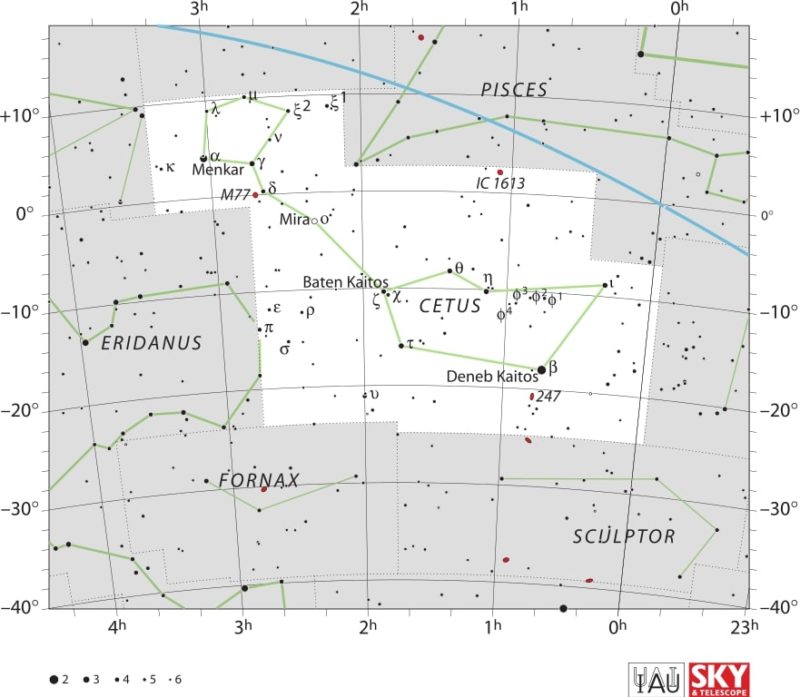
October 8: Draconid meteor shower peak
The Draconids are another short and variable meteor shower that will peak on October 8. Some meteors may also be spotted between October 6 and October 10. They will radiate from the constellation of Draco at the speed of 20 km/s on average. The Moon will be a 6 days old waxing crescent at 31%.
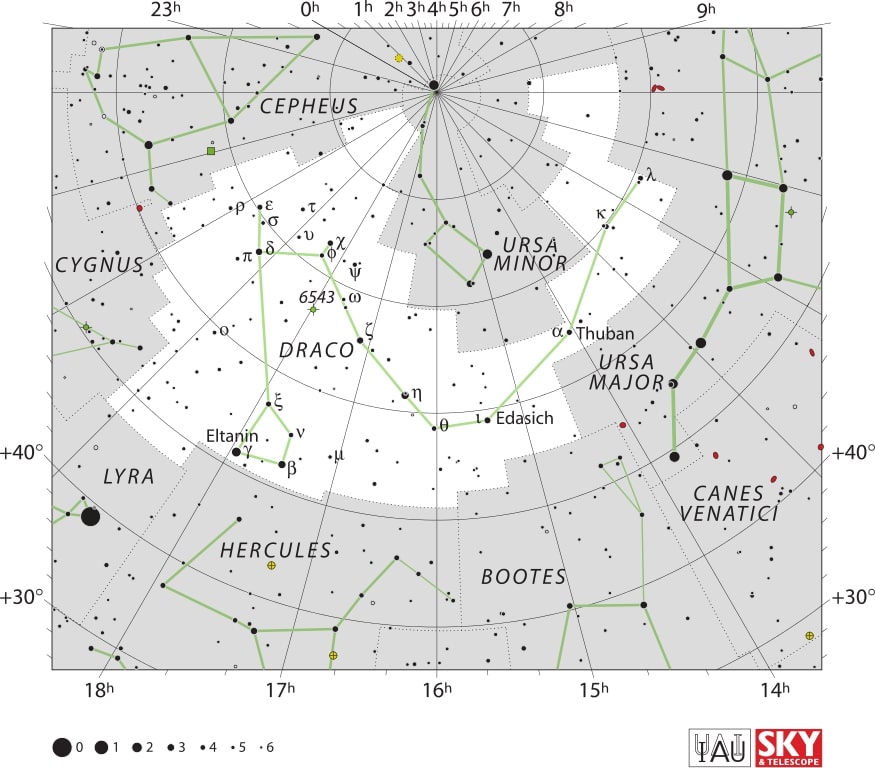

October 9: Jupiter enters retrograde motion
Jupiter will begin retrograde motion, which means it will stop traveling eastward through the constellations and instead turn to travel west. All of the outer planets in the solar system periodically experience this orientation reversal, which occurs a few months before they reach opposition.
Ancient observers were troubled by retrograde motion because it didn’t fit with their belief in uniform circular orbits around the Earth. The phenomenon is actually due to Earth’s orbit around the Sun, which shifts our perspective and causes planets to appear to move back and forth in the sky while continuing their overall eastward path through the constellations.
Jupiter can be spotted in the constellation of Taurus with an apparent magnitude of -2.6.


October 10: Southern Taurid meteor shower peak
The Southern Taurids will peak on October 10 with a zenithal hourly rate of 5. The Moon a 8 days old waning crescent at 48%.
Some meteors may also be spotted between September 10 and November 20. They will radiate from the constellation of Cetus at the speed of 27 km/s on average. (Constellation map already displayed above, when discussing the asteroid 39 Laetitia at opposition.)
October 11: δ-Aurigid meteor shower peak
The Delta Aurigids are a small meteor shower with an average of 2 meteors per hour (ZHR) during the peak if conditions are ideal. The Moon will be 9 days old waxing gibbous at 59%.
Some meteors may also be spotted between October 10 and 18. They will radiate from the constellation of Auriga at the speed of 64 km/s on average.
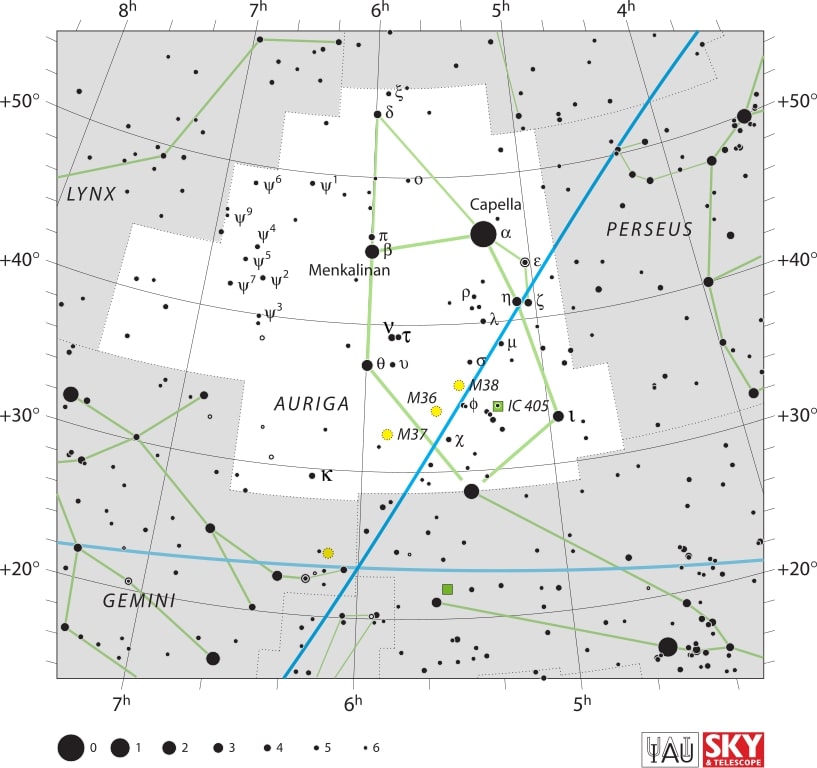

October 12: Comet C/2023 A3 (Tsuchinshan-ATLAS) at perigee


The comet C/2023 A3 (Tsuchinshan-ATLAS) will reach perigee, meaning it will reach the closest point in its orbit to the Earth at a distance of 0.46 AU. It will have an apparent magnitude of 2.8 according to the BAA Comet Section, so visible to the naked eye. Look in the constellation of Virgo.
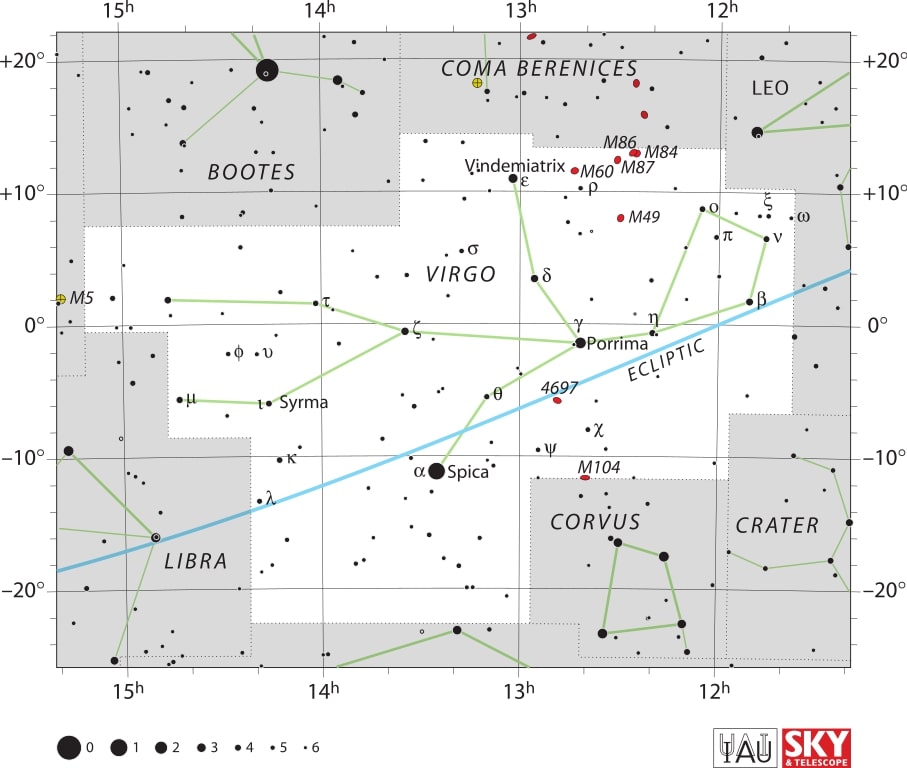

October 14: Conjunction of the Moon and Saturn
The Moon and Saturn will reach conjunction passing within 6’45” of each other while sharing the same right ascension.
At around the same time the two bodies will also make a close approach (appulse) reaching 6 arcminutes from each other, but not sharing the same right ascension. In some parts of South Asia and East Africa this distance will be so close as to lead to a lunar occultation of Saturn, meaning the Moon will pass in front of Saturn thereby hiding it from view temporarily.
The Moon will be at apparent magnitude -12.7 and Saturn at magnitude 0.6 both in the constellation of Aquarius. The Moon will be 12 days old waxing gibbous at 92%, just a day away from full moon.


October 14: The Triangulum Galaxy at its highest point in the sky
The Triangulum Galaxy (Messier 33, M33, or NGC 598) will reach its highest point in the sky at around midnight local time. It can be found in the Triangulum constellation, not far from its neighbor the Andromeda Galaxy.


It will reach apparent magnitude 5.8 with some interference from the Moon, which will be 12 days old waxing gibbous at 93%. It will be extremely difficult to spot with the naked eye, so a pair of binoculars or a small telescope would be recommended.


October 17: Asteroid 19 Fortuna at opposition
The asteroid 19 Fortuna will be at opposition at around midnight local time. It will reach the highest point in the sky and opposite to the Sun.
At the same time the asteroid will be closest to the Earth (perigee) at a distance of 1.072 AU. At this time it will be the brightest, with an apparent magnitude of 9.3. Look in the constellation of Pisces, with at least a 4-inch telescope.


October 17: Dwarf planet Eris at opposition
The dwarf planet 136199 Eris will reach a point opposite to the Sun in the sky, known as an opposition. This will happen around midnight local time, regardless of where in the world you are.
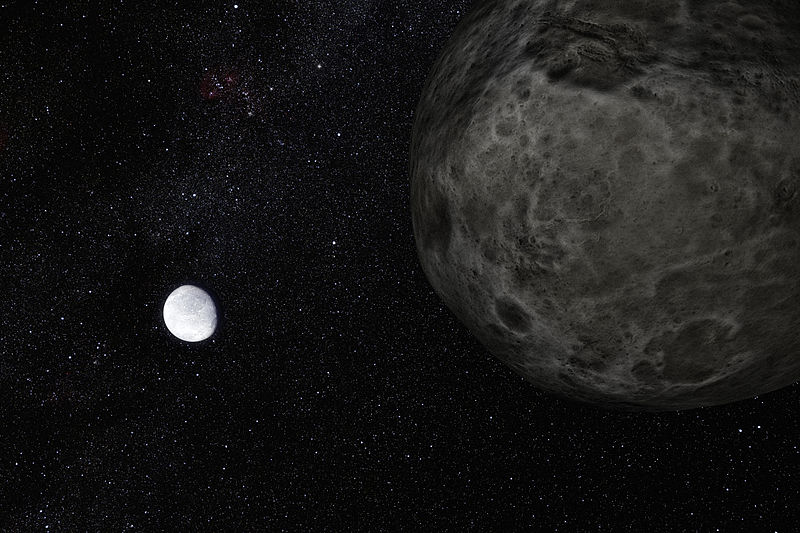

ESO/L. Calçada and Nick Risinger. License: CC BY 4.0.
With an apparent magnitude of 18.6, you will most definitely need a powerful telescope. If you have access to one, look in the constellation of Cetus. The Moon will unfortunately be interfering quite a bit in stargazing this middle of October 2024 as it will be at the full moon phase.
At about the same time, Eris will also make its closest approach to the Earth (perigee) at a distance of 94.66 AU, making this the best time to observe the dwarf planet.



October 18: ε-Geminid meteor shower peak
The Epsilon Geminids are a small meteor shower with only 3 meteors on average during the peak if conditions are perfect. Although the peak is on October 18, some meteors could also be spotted between October 14 and 27.
The meteors will appear to radiate from the constellation of Gemini at the fast average speed of 70 km/s. They originate from debris of the comet C/1964 N1 (Ikeya).
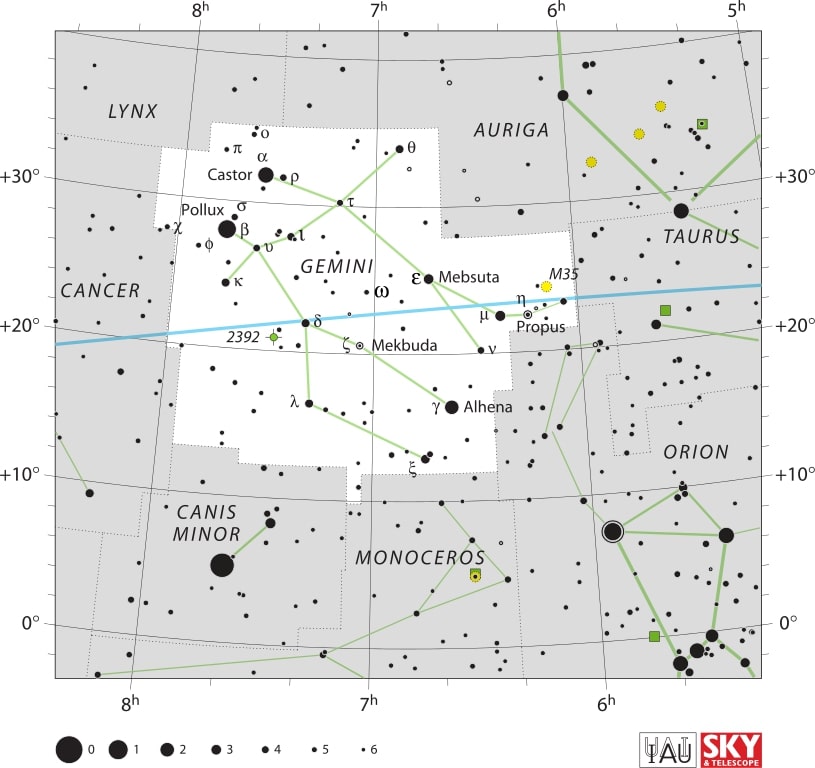

October 19: Close approach of the Moon and the Pleiades
The Moon and the Pleiades (also known as M45 or Messier 45) will make a close approach, passing within only 11.6 arcminutes of each other.


Both objects will be in the constellation of Taurus with the Moon being at apparent magnitude -12.7; and the Pleiades at 1.3. (Constellation map already displayed above, when discussing Jupiter entering retrograde motion.) The Moon will be 17 days old waning gibbous at 88%.
October 21: Orionid meteor shower peak
The Orionids are a medium sized meteor shower with an average of 15 meteors during the peak if conditions are optimal. Some meteors can also be seen between October 2 and November 7.
The meteors will appear to radiate from the constellation of Orion at the fast speed of 66 km/s on average. They originate from debris left behind by the famous Halley’s Comet. The Moon will be 19 days old waning gibbous at 76%.
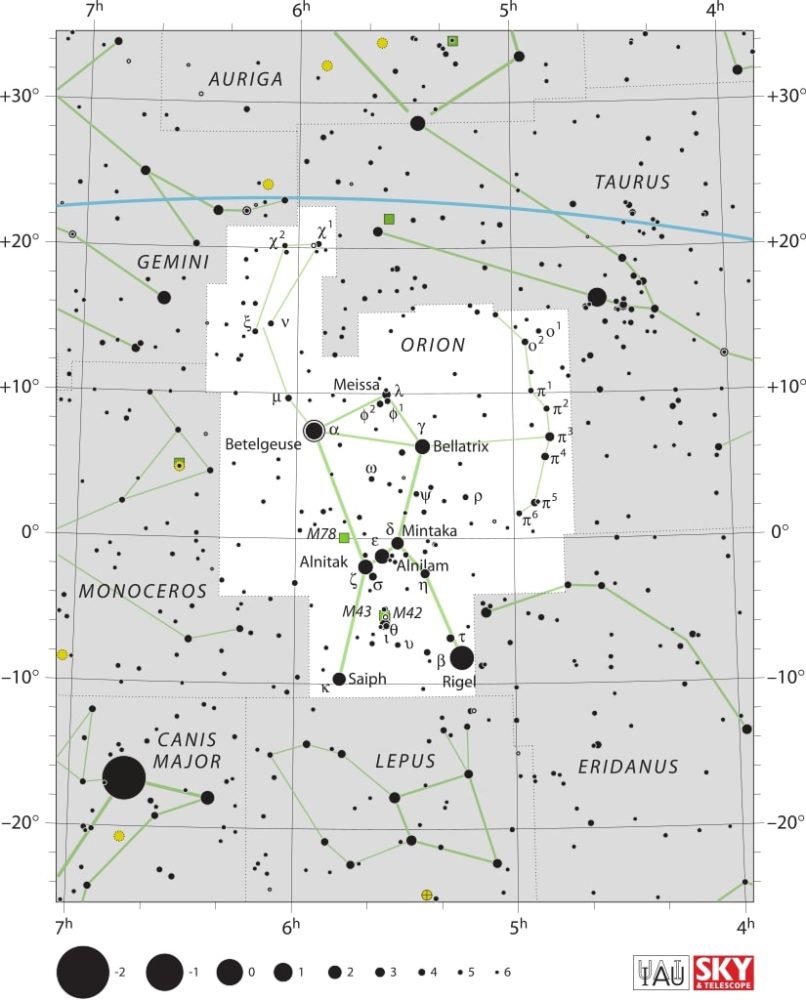

October 21: Conjunction of the Moon and Jupiter
The Moon and Jupiter will reach conjunction passing within 5°48′ of each other while sharing the same right ascension.
Around the same time, the two bodies will also make a close approach (appulse) reaching 5°47′ from each other, but not sharing the same right ascension.
The Moon will be at apparent magnitude -12.5 and Jupiter at magnitude -2.6 both in the constellation of Taurus. (Constellation map already displayed above, when discussing Jupiter entering retrograde motion.) The Moon will be 19 days old waning gibbous at 75%.
October 23: Conjunction of the Moon and Mars
The Moon and Mars will be at conjunction by sharing the same right ascension and passing within 3°54′ of each other.
Around the same time, the two bodies will also make a close approach (appulse) reaching 3°49′ from each other, but not sharing the same right ascension.
Look for the two bodies in the constellation of Gemini. (Constellation map already displayed above, when discussing the ε-Geminid meteor shower peak.) The Moon will be a very thin waning gibbous (50%) at 21 days old. The Moon will still be at apparent magnitude of -12.0, while Mars will be at magnitude 0.2.
October 24: Leonis Minorid meteor shower peak
The Leonis Minorids are the final meteor shower to peak this month of October. It is a small one with only 2 meteors per hour on average during the peak, with ideal viewing conditions. Unfortunately the viewing conditions will not be ideal because of the Moon’s partial interference. It will be a 22 days old waning crescent at 45%.
Some meteors can also be seen between October 19 and 27, radiating from the constellation of Leo Minor at the high average speed of 62 km/s. The originate from debris of the comet C/1739 K1.
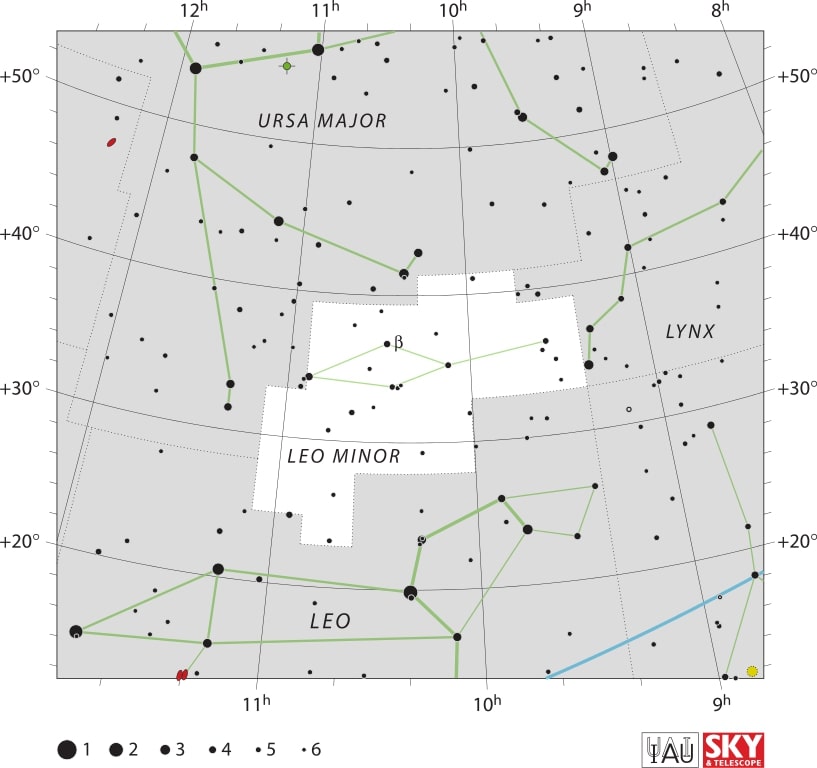

October 27: Asteroid 1036 Ganymed at opposition
Asteroid 1036 Ganymed will reach opposition, when it lies opposite to the Sun in the sky. It will reach the highest point in the sky around midnight local time.
On this occasion, the asteroid Ganymed will pass within 0.412 AU of Earth and reach a peak brightness of apparent magnitude 9.2. Unfortunately even at the peak, this asteroid will be too faint to observe with the naked eye. You will need at least a 4 inch telescope, which you should point towards the constellation of Pegasus. The Moon will be a 25 days old waning crescent at 18%.
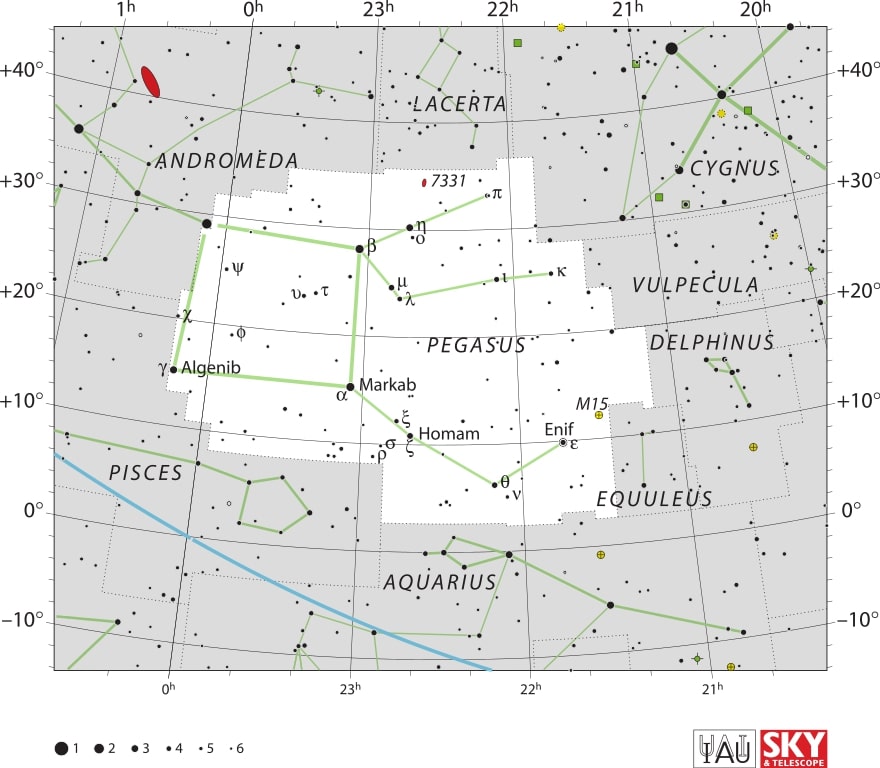

Moon Phases in October 2024
As you know, the Moon has a big impact on the visibility of celestial bodies and astronomical events in the night sky. So to help you with stargazing, here’s a calendar of the phases of Moon for this month of October 2024:


Positions of the Planets in October 2024
- Mercury: The closest planet to the Sun can be seen at dawn and dusk travelling across the constellation of Virgo. This planet, being the closest to the Sun, will appear to move quickly in the night sky and its position will change in the following weeks.
- Venus: The sister planet can be seen travelling across the constellation of Libra. Just like Mercury, Venus can only be seen at dawn and dusk.
- Mars: The red planet can be seen in the constellation of Gemini later in the month.
- Jupiter: The gas giant is visible in the constellation of Taurus. Jupiter can easily be spotted with the naked eye, even in highly illuminated cities.
- Saturn: The ringed giant can be seen with the naked eye in the constellation of Aquarius.
- Uranus: The ice giant can be seen in the constellation of Taurus with the use of a telescope.
- Neptune: The blue giant requires a telescope pointed in the constellation of Pisces in order to be seen.
Positions of Dwarf Planets and Large Asteroids in October 2024
- Ceres: The asteroid belt’s lone dwarf planet can be seen in the constellation of Sagittarius with the help of a telescope.
- Vesta: This large asteroid can be seen in the constellation of Leo with a telescope.
- Pallas: The asteroid can be observed with a telescope in the constellation of Hercules.
- Hygiea: The fourth largest asteroid can be found with a telescope in the constellation of Aries.
- Pluto: This distant dwarf planet can be found in the constellation of Capricornus with the help of a large telescope.
Major astronomical events next month – November 2024
- November 12: Northern Taurid meteor shower peak
- November 13: Asteroid 11 Parthenope at opposition
- November 15: Saturn ends retrograde motion
- November 17: Leonid meteor shower peak
- November 17: Uranus at opposition
- November 21: α-Monocerotid meteor shower peak
- November 28: November Orionid meteor shower peak
- November 28: Comet 333P/LINEAR passes perihelion
Conclusion
October 2024 offers spectacular stargazing and astronomy events. From viewing the Andromeda Galaxy at its highest point to meteor showers and planetary conjunctions, there’s plenty to enjoy.
To ensure you don’t miss out on any celestial happenings, sign up for our newsletter to receive stargazing calendars and more updates. Happy stargazing!
Sources:
- Planetary ephemerides produced by NASA’s Jet Propulsion Laboratory (JPL)
- International Meteor Organization
- British Astronomical Association Comet Section
See also:
- Previous month’s calendar: Stargazing Calendar for September 2024
Would you like to receive similar articles by email?



